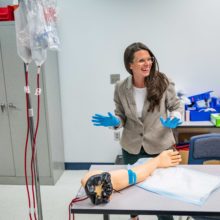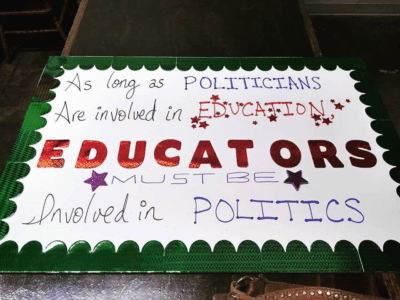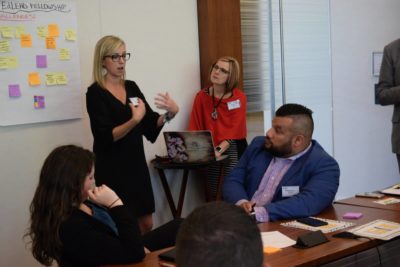

Since 2010, the North Carolina Community College System has experienced yearly enrollment decline. Despite continued efforts from the State Board of Community Colleges and system office to slow the decline, including an enrollment task force that met for the second time this week, growing an institution’s student population is difficult. And, given the socioeconomic circumstances of each county, a single solution cannot reverse waning enrollment across the board.
Postsecondary enrollment is more than just getting students in the door. Retention, student support, and completion rates, along with other factors, collectively represent an institution’s overall enrollment effectiveness. But enrolling students is the first step to increasing student populations. While growth is complex, assessing the challenges of enrollment and understanding the opportunities can bridge the gap for community college officials.
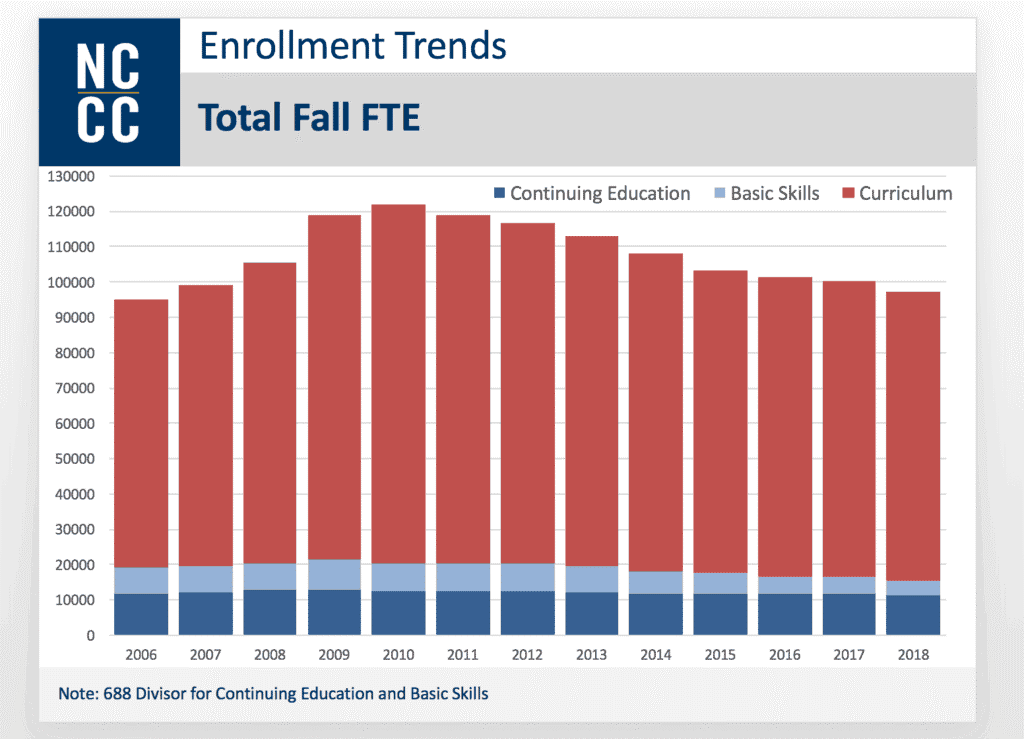

Ending the stigma
One of the biggest challenges that college enrollment officials encounter is the negative perception of a community college education. High school students, families, and community members often express that attending a community college is a last resort, not a first choice, for graduating seniors. And it’s not just the language of last resort that’s problematic. According to Sandra Lackner, dean of students at Isothermal Community College, many students already attending community colleges field questions like, “Are you going to a real college after this?” While changing years of long-held beliefs is not an overnight fix, there are opportunities to educate prospective students and their families.
One way the system office’s new marketing initiative is tackling this negative perception is by highlighting the experiences of community college graduates. Once on the landing page, visitors read real stories from students and review data that detail the total number of programs offered at NC community colleges, online course options, salaries of in-demand jobs, and overall employment rate of graduates. The initiative showcases the benefits and positive outcomes of a community college education.
Another way to change the perception of community colleges is to highlight their relative affordability in light of the national attention on student loan debt and college affordability. One of the main goals of the NC community college system is to provide “low-cost, high-quality educational opportunities.” To date, the average tuition at public community colleges in North Carolina is $3,911 per year for in-state residents. The average tuition at public four-year institutions in North Carolina is about double this amount, and the average tuition at private four-year institutions is almost six times this amount.
For college students, finances are a critical component to educational attainment. For one group in particular, the idea of adding to Millennials $1 trillion in student debt induces anxiety and fear. Studies suggest that Gen Z’ers (birth years between 1996-2010) are apprehensive about taking on insurmountable debt to attend college. The fear of high student loan debt and lower tuition cost is an opportunity for community colleges to position themselves as a smart financial choice.
Countering economic forces
Another major challenge facing community colleges is the ebb and flow of enrollment due to economic forces. North Carolina community colleges often do well during recessions, leading to increased enrollment across the board. But, traditionally, an economic boom means a dip in enrollment.
Whether this trend continues could depend on the recruitment efforts by community colleges. Unlike four-year postsecondary institutions, community colleges have historically followed a more reactive model of enrollment communication. While some efforts exist to bring awareness to programs, outreach and follow-up are often loosely structured. Implementing more effective communication strategies is an opportunity for community colleges to increase enrollment during both recessions and booms.
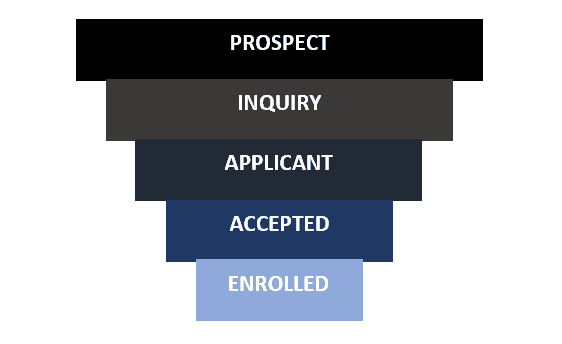

Many four-year postsecondary institutions work to implement communication strategies at each level of the enrollment funnel. Within these levels, students receive information that is pertinent to their stage in the enrollment process and their academic interests. For example, when a prospective student asks for more information from a college, the student generally receives communication about the institution, academic programs, and information about the application process – encouraging them to take the next step and apply.
This structured enrollment communication is vital at each stage in the funnel because it sustains engagement between the institution and the student. If a student applies in March 2020 but doesn’t plan to attend until the fall, the student could very well lose interest if communication stops once they are accepted. Enrollment officials refer to this phenomenon as “summer melt.”
And while enrollment funnels may look different for each institution, the main tenants and functions are the same — track and move. Intentional assessment of messaging during the enrollment phase at community colleges is a chance to bring awareness and plug the holes of missed opportunities for communication.
Assessment of enrollment communication can also include exploring tactics for segmenting audiences. While the open-door policy of NC community colleges makes education accessible for many, it can also pose challenges for enrollment and recruitment communication. Messaging to the masses can make targeted communication difficult. While not always feasible, segmenting communication by audience can increase measurable action — helping students move from prospective student to enrolled student.
No one solution can solve the enrollment decline of the North Carolina Community College System. It’s a layered issue that requires multiple solutions. Though enrollment growth is crucial, growth opportunities cannot supersede the system’s mission to open the door to high-quality, accessible educational opportunities. As Dallas Herring said, “We need to take people where they are and take them as far as they can go.”
